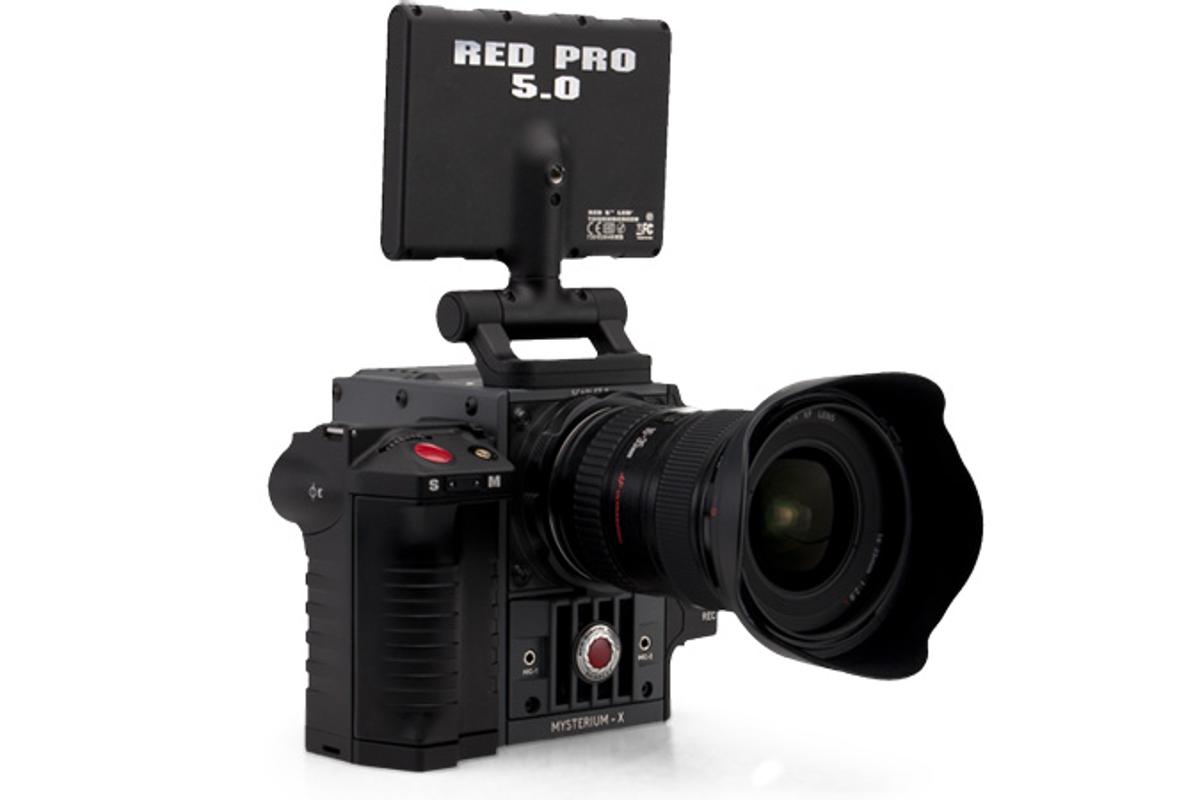It would be hard to imagine a greater contrast between today's launch by Canon of its EOS C300 digital cinema camera and the launch of RED's long-awaited Scarlet. Canon's event was huge and long-winded with a string of cinematography heavyweights on stage. At the RED gathering half an hour later, an ad hoc bunch of the faithful turned up at RED studios, ostensibly just to watch the same web page update as the rest of the world. Alas it didn't quite work out like that.
Due to what RED believes was a malicious attack, their servers (beefed up for the occasion) collapsed and red.com went dark. Head Honcho Jim Jannard had to come out and address the gathered 300 or so himself whilst the rest of the world gleaned tidbits over twitter. This sort of thing is part of the fun of RED that is both enjoyable and infuriating in equal measure. Let's not forget though that RED is, by far, the most successful manufacturer of digital cinema cameras with nearly 10,000 units in the wild and they are in use on the majority of Hollywood films in production.
The news of Scarlet itself was quite simple yet quite significant, and an interesting counterpoint to Canon. The concept for Scarlet announced three years ago envisaged a video-sized chip (2/3-in) providing a 3K picture for 2K deliverables after processing. All that has gone away. What the world wants, argues RED, is an EPIC (RED's flagship 5K cinema camera) for less money. So that's what's happening. Jim Jannard explained that the ASICs (Application Specific Integrated Circuits) in the Epic are expensive and advanced and many of them fail to reach the high performance required for the Epic's stellar spec's. These are of course rejected and just sit on a shelf. By matching these chips with less complex electronics and accepting the lower data rates and capabilities, RED's per unit costs drop dramatically and a baby Epic can be manufactured at a reasonable cost. So that's what Scarlet X is.
At 5K resolution Scarlet X will shoot 6 fps, suitable for high quality stills photography (similar resolution to Canon 7D, 60D, 600D etc.). At 4K resolution Scarlet X will shoot 1 to 24 fps, suitable for film making, and at QuadHD it will shoot 30 fps. At 2K it will shoot up to 60 fps, and at 1K it will shoot at up to 120 fps. The camera block (brain) is the same size as the Epic brain, the inputs and outputs are the same, and all the myriad RED accessories will fit both cameras. The lens mount is the standard cinema PL mount or, and this is genius, the Canon EF mount, with autofocus support.
Price for the Scarlet X brain plus a SSD (sold state disc drive) is US$9,750 (GBP6,000 / EUR7,000). For a kit with battery, controller and LCD the cost will be around $14,000 (GBP8,700 / EUR10,000) depending on options. Delivery on the PL mount version will be this month and the Canon mount version will be available in December. In a significant announcement Jim Jannard promised that as of next February RED will have ramped production such that for the first time in their history, cameras should be available from stock.

For people expecting some radical new product, this announcement will be a disappointment. In reality it's a very smart and rational move that allows RED to leverage its existing development work and its rapidly ramping manufacturing capability to compete head-on with the camera giants that are finally now starting to move into their space. The comparison with the Canon C300 announcement is interesting and it's one that RED wins on points. The Canon is marginally more expensive but only provides 1080P 4:2:2 output whereas the RED provides 4K RAW suitable for processing in RED's comprehensive (free) software. The Canon is rugged but only to the extent of other EOS cameras. The Scarlet is built, literally, like a tank and the EPIC has been proven in the field for a year now. The Canon lenses are doubtless superb but RED have their own range of cost-effective cinema lenses. In any case you can use Canon lenses on the Scarlet X, and you get autofocus, which ironically the Canon camera does not provide.
The biggest advantage of the Scarlet X though is this. RED provides a modular system that is guaranteed to increase in capability over the years. You can swap between the PL and Canon mounts for instance on the Scarlet. Not possible on the C300. RED software and firmware is guaranteed to be upgraded on a regular basis and RED guarantees that you will be able to upgrade the guts of your camera years down the line when the technology has moved on. It would go completely against Canon's business model to offer the same sort of upgradeability.
Like Arri and Sony, Canon have to provide 'good-enough' picture quality to gain customers through reputation, familiarity, brand loyalty, dealer reach and so on. Reports suggest that the picture from the Canon is very good. There is still only one 'king' of Hollywood digital film-making, however, and that is unlikely to change after today's announcements.












